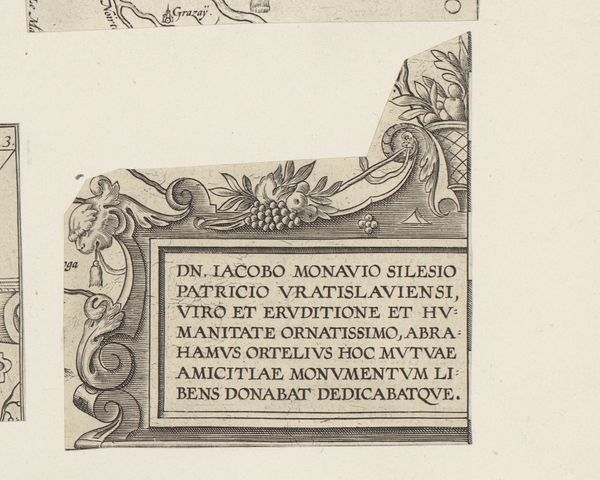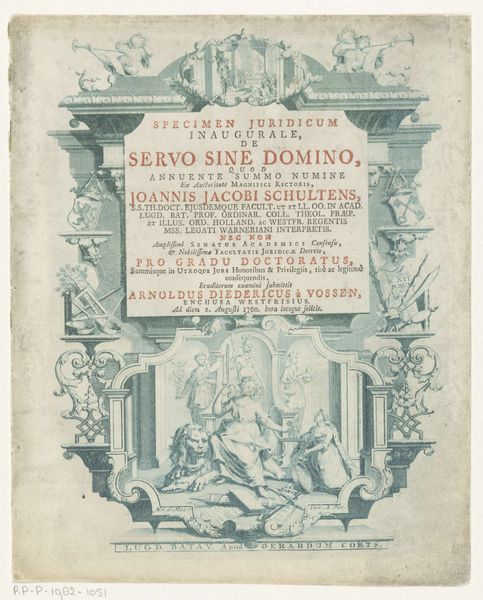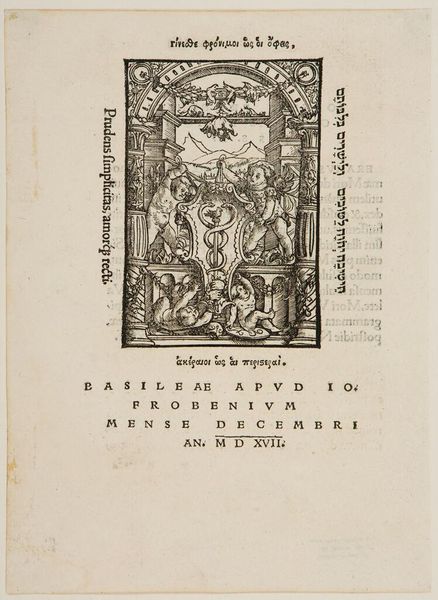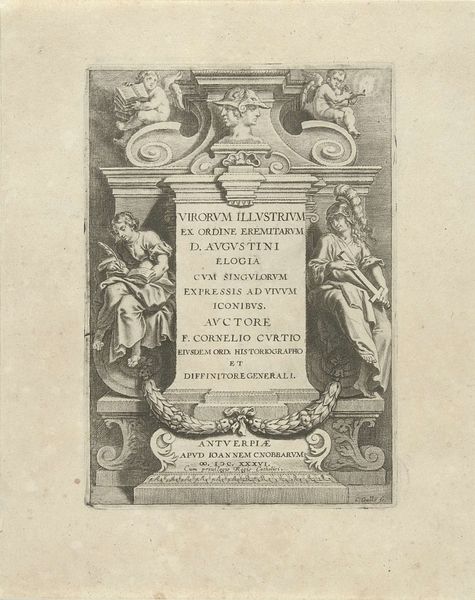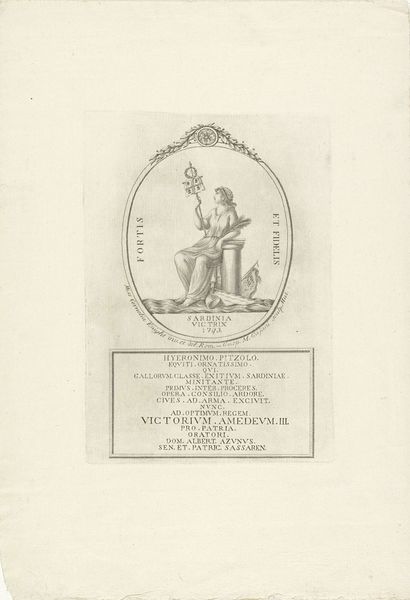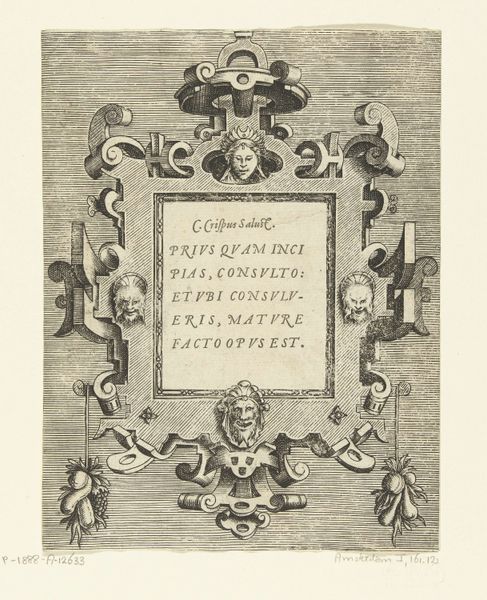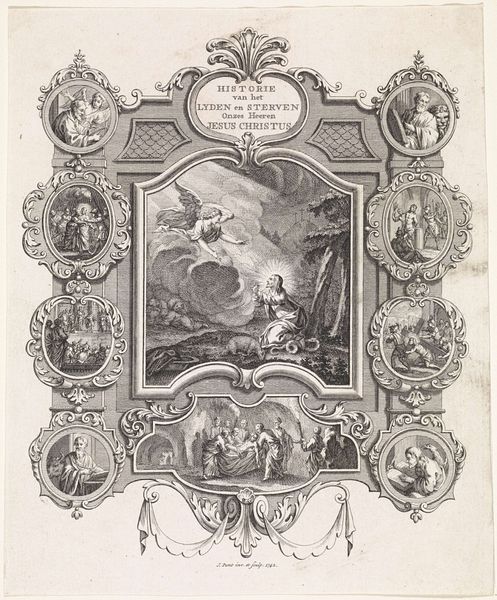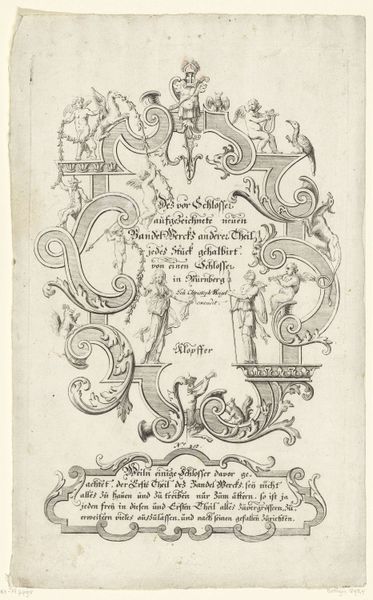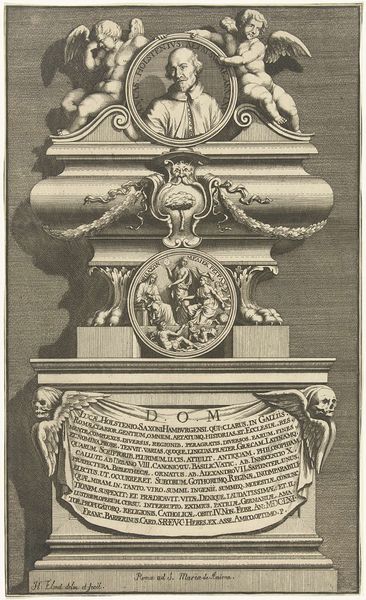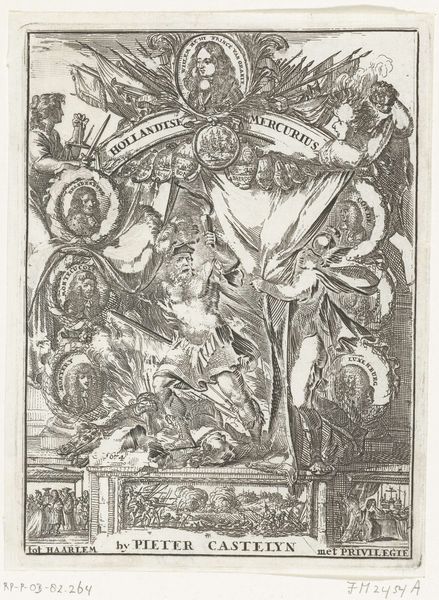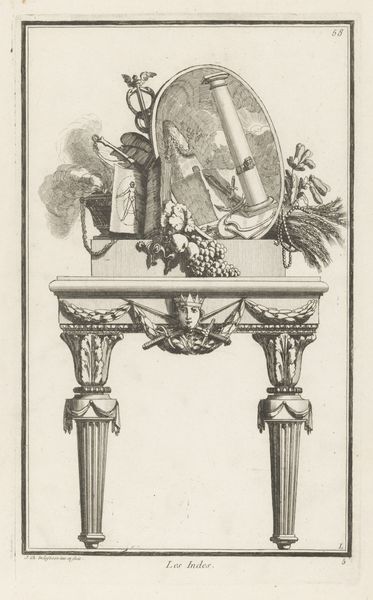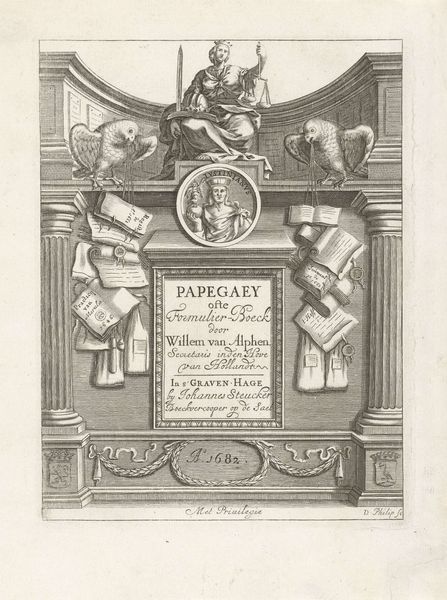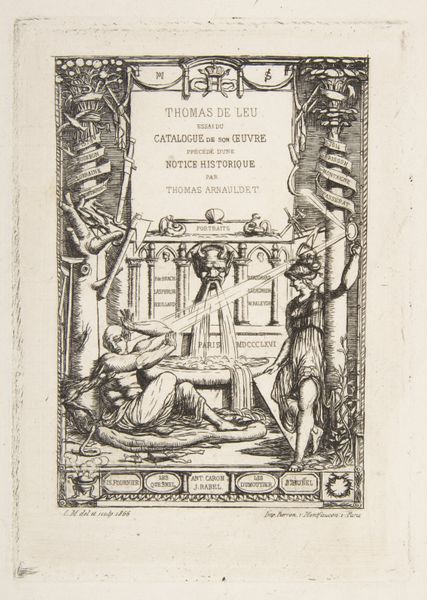
Ornamentele omlijsting bekroond met de Stedenmaagd van Amsterdam 1702 - 1759
0:00
0:00
print, engraving
#
portrait
#
allegory
#
baroque
# print
#
old engraving style
#
line
#
history-painting
#
academic-art
#
decorative-art
#
engraving
Dimensions: height 315 mm, width 229 mm
Copyright: Rijks Museum: Open Domain
Curator: Jan Wandelaar, a prominent figure of his time, is credited with this engraving, "Ornamentele omlijsting bekroond met de Stedenmaagd van Amsterdam," which dates roughly between 1702 and 1759. It's currently held in the Rijksmuseum. Editor: Immediately, the density of detail strikes me. Look at how tightly packed the figures are in that upper register, and how it then gives way to this formal inscription. The printwork must have demanded incredible skill and precision. Curator: Absolutely. Wandelaar's craft highlights Amsterdam’s elite through the idealized figures above the names, constructing a narrative that centers on patriarchal figures of Dutch society. The allegorical figures create an elevated scene to the leaders listed, with a goddess crowning the leaders of the city. Do you get a sense of that idealization? Editor: It's blatant, of course. I'm also interested in the method of production. Consider the materials – paper, ink, and the metal plate from which this was printed. These materials tell their own story about the accessibility of such imagery, as prints could disseminate propaganda faster than paintings. These materials served a civic purpose. Curator: Indeed, this piece intersects the civic with the symbolic. It functions as both public declaration and celebration, but who had access to this print at the time? What biases do the chosen allegorical figures, rendered in the baroque style, present about the era's socio-political values, and how do such artistic choices cement specific, exclusive ideologies? Editor: Well, consider how the production relates to consumption. This engraving likely adorned a book or official document – an object owned by those who had access to literacy, money and status. In that sense, it affirms existing social hierarchies while also presenting a very tangible piece of civic infrastructure through symbolic material production. Curator: Precisely. So, while Wandelaar’s technique demonstrates impressive artistic and material mastery, its contextualization points to a fascinating dynamic: artistic skill harnessed to project and perpetuate selective representations of power, with the civic leaders raised up and deified as symbols. Editor: A crucial observation, for it showcases that the craft is also bound to function as another element of statehood and governance. It leaves me to wonder what alternate images of the Stedenmaagd could represent the labor required to support such elaborate public declarations.
Comments
No comments
Be the first to comment and join the conversation on the ultimate creative platform.
